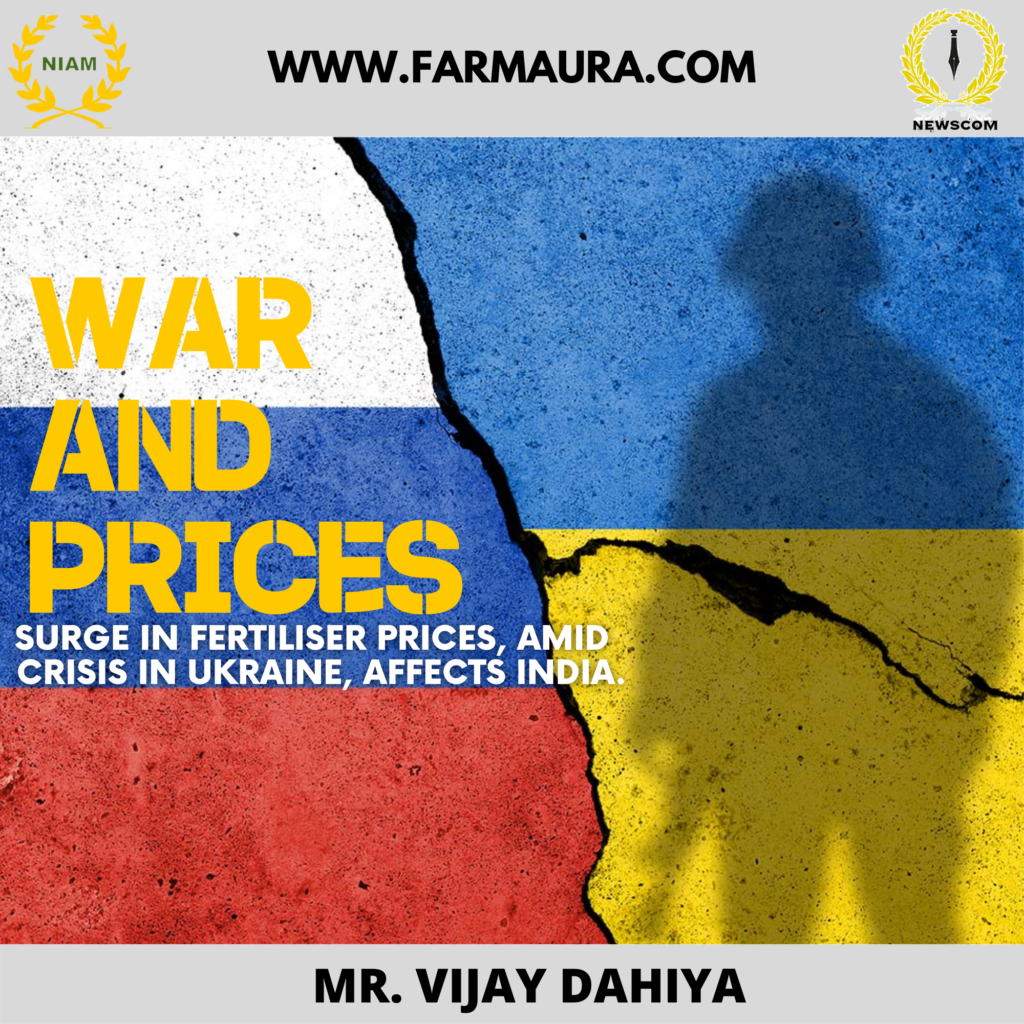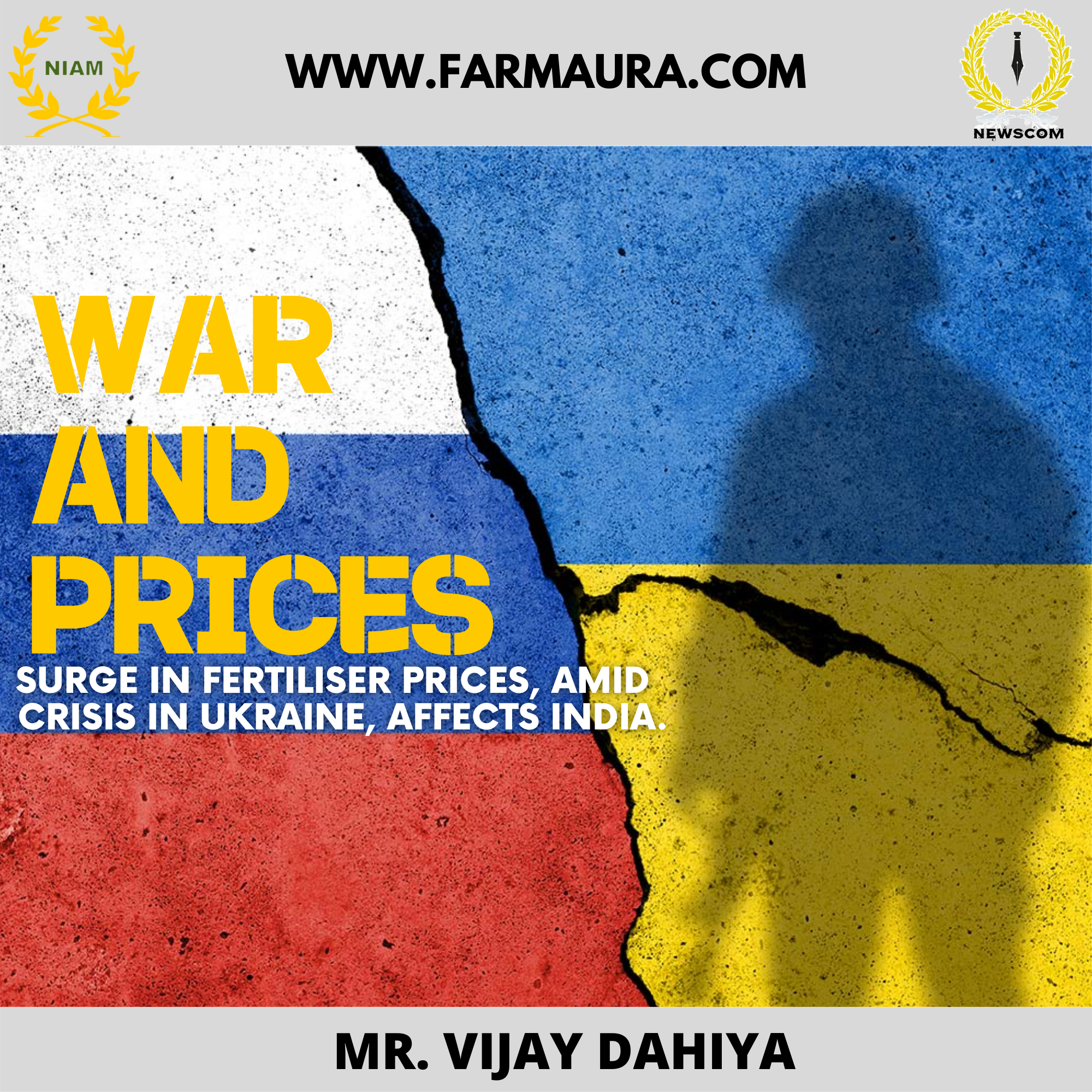
Indian farmers may be unwittingly benefiting from Russia’s disastrous assault on Ukraine. Despite a bumper rabi harvest of wheat and mustard, soaring international agri-commodity prices, mainly to shipping disruptions in the Black Sea, have enhanced crop realisation prospects. Maize and barley are on the way, and the upcoming Kharif agricultural season appears to be as good if current prices remain stable or do not fall dramatically. Farmers will be encouraged to plant additional land. Cotton, maize, soybean, groundnut, sesamum, and sunflower are all listed under cotton. It would aid crop diversity, particularly for farmers transitioning away from paddy and sugarcane.
However, there is one thorn in the flesh: fertilisers. India imports plant nutrients in different forms, including finished products, raw materials, and intermediates. Urea and di-Ammonium phosphate (DAP) are currently trading for $1,200 and $1,300 per tonne, respectively, up from $400 and $500 per tonne a year ago. Muriate of potash (MOP) imports into India have risen from $247 to $592 per tonne, as have ingredient prices such as phosphoric acid (from $795 to $1,530), sulphur ($225 to $450), and ammonia ($475 to $1,150). The reason is straightforward. Russia is the world’s major urea exporter accounting for around 40% of worldwide MOP trade, along with its crucial partner Belarus. Russia is also one of the top five DAP exporting nations. The entire international fertiliser trade has been put in peril as a vital supply source has been cut off by a blend of war-related cargo movement suspensions and financial sanctions.
What options does India have? Probably three things. First, in a seller’s market, rely less on floating import tenders, which will naturally drive up global prices further. A preferable option is to deal directly through government channels, with Canada, Israel, and Jordan for potash, and Saudi Arabia, Morocco, Senegal, Tunisia, Togo, and Egypt for phosphates. Similar urea and DAP sourcing, say 1.5-2 million tonnes each, is achievable even with China. With Kharif sowings beginning in mid-June, there is a reasonable window of opportunity to secure supplies. The second is to launch a campaign considerably ahead of the growing season to persuade farmers to switch from urea, DAP, and MOP to complex fertilisers, having a lower nutrient content but a more balanced one. Third, since November 2012, the maximum retail price of urea has remained unchanged. To prepare farmers for ultimate price decontrol and a flat per-acre subsidy regime, a minimum 25% increase is required now.




